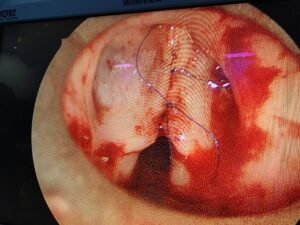June is a Pride month. Voice feminization is a very important part of transformation after gender reassignment surgery etc. Voice feminization surgery (VFS) is opted for by a few trans women if they cannot modify their voice with voice therapy. Let’s take frequently asked questions about VFS
What is voice feminization surgery?
Voice feminization surgery is done to change the low-pitched voice of a man to the high-pitched voice of a woman.
How is it achieved?
The high-pitched voice is achieved by changing the length, mass, or tightness of the vocal cords with the help of surgery.
Who performs these Surgeries?
An ENT surgeon or an otolaryngologist who is trained in laryngology performs this surgery.
What are the types of surgeries available?
The surgeries are either endoscopic or open.


Wendler’s glottoplasty; Anterior webbing of the cords
Cricothyroid approximation: Open surgery to tighten the vocal cords.
Laser Reduction glottoplasty: Reduces the size or mass of the vocal cords.
What is the preparation needed before the surgery?
Voice therapy is started before the surgery. The speech-language pathologist will tell you to stop smoking and having alcohol before the surgery. Exercises are given to you if need be. So vocal hygiene and vocal exercises are taught to you by your SLP.
It’s important to have realistic expectations from voice feminization surgery. It is essential to talk to your healthcare provider and psychologist before the decision on surgery is made.
What is the role of the voice therapist in the feminization of voice?
Transgender voice therapy depends on your needs. A specialist can help you determine your goals and create an individualized plan, as well as show you how to avoid vocal damage as you change your voice and speech.
Helps in getting the Intonation, Non-verbal communication, loudness, and resonance right.
What happens during the surgery?
The patient is taken under general anesthesia and depending on the kind of procedure selected for the particular patient the surgeon will operate through a laryngoscope or with a cut on the neck. It is generally done as a daycare procedure without admission to the wards.
What are the risks involved in the surgery?
- Dysphonia or difficulty in speaking or pitch breaks
- Hoarseness
- Fluid retention or edema
- Voice is still too low or too high pitched Too much pitch increase (voice is unnaturally high).
- Vocal cord dysfunction.
- Vocal cord lesions (abnormal growths or bumps on your vocal cords).

- Vocal fold paralysis.



0 Comments